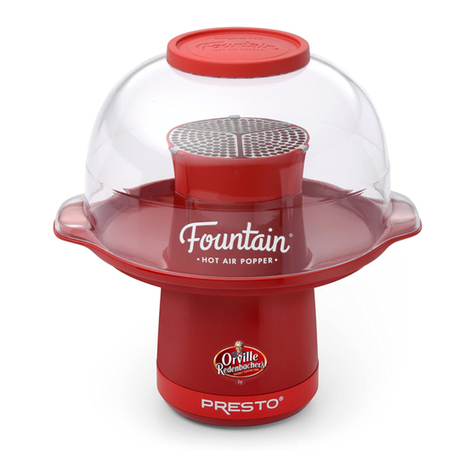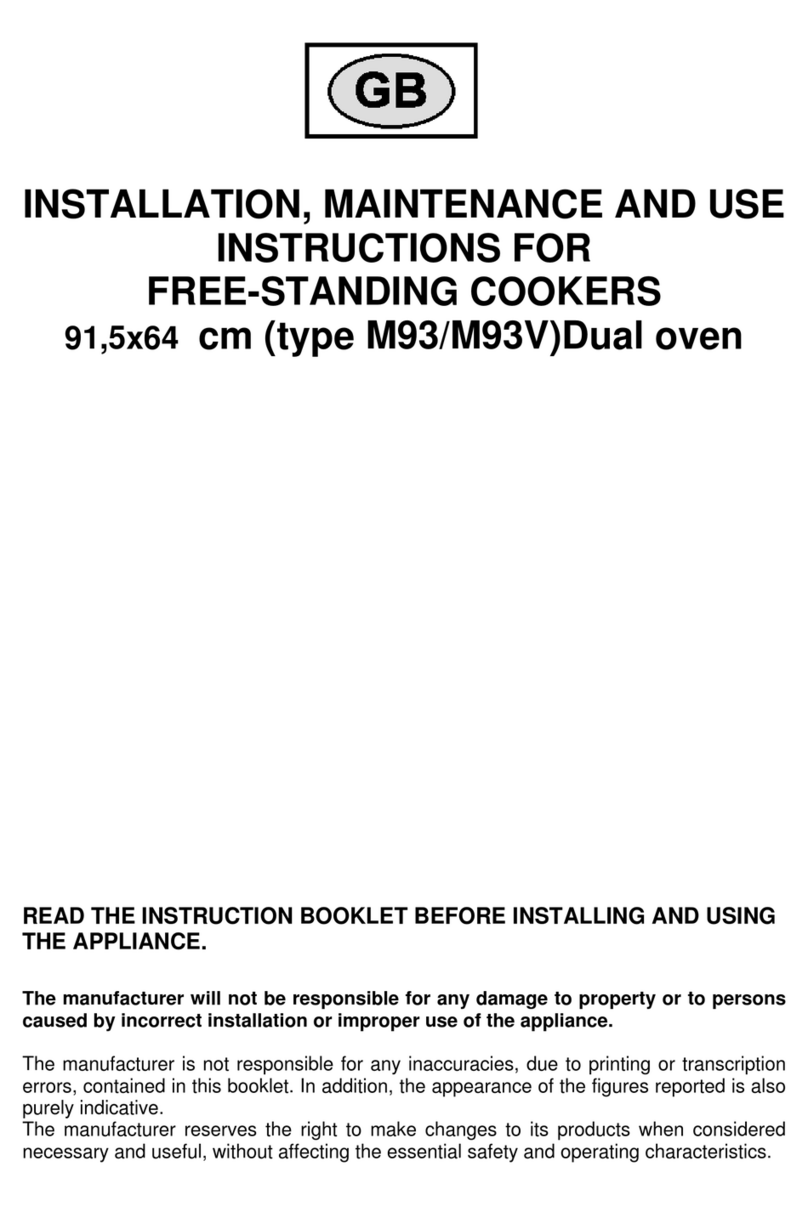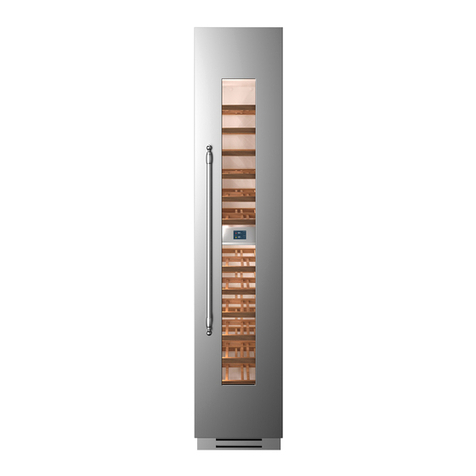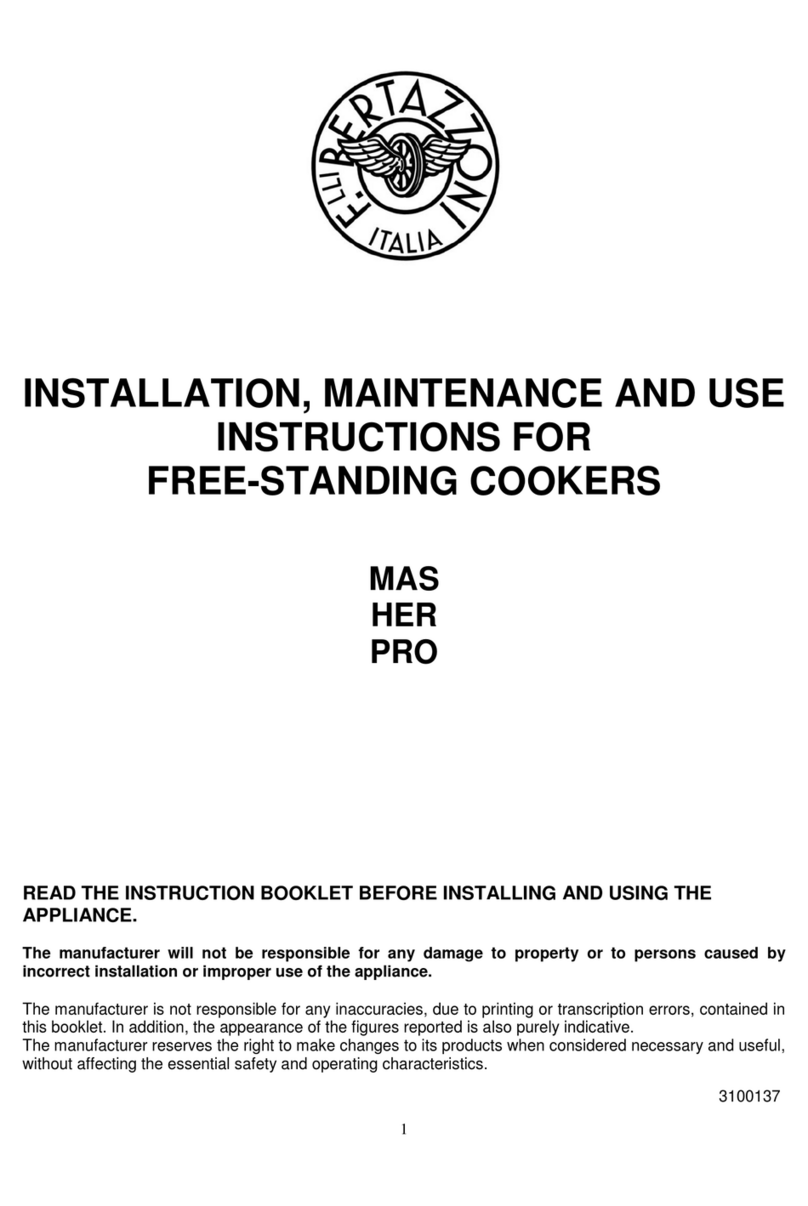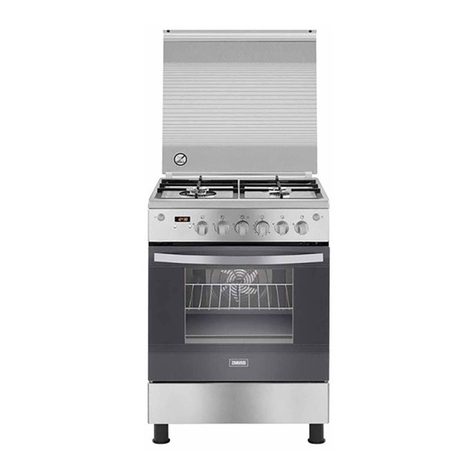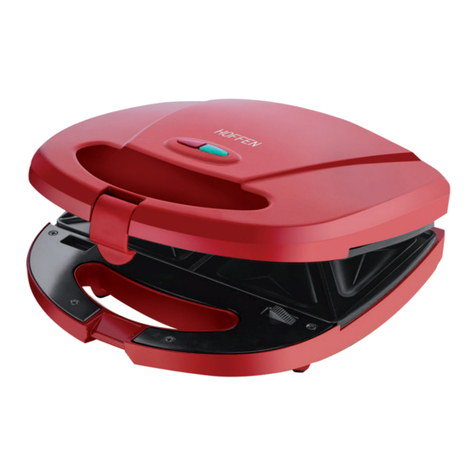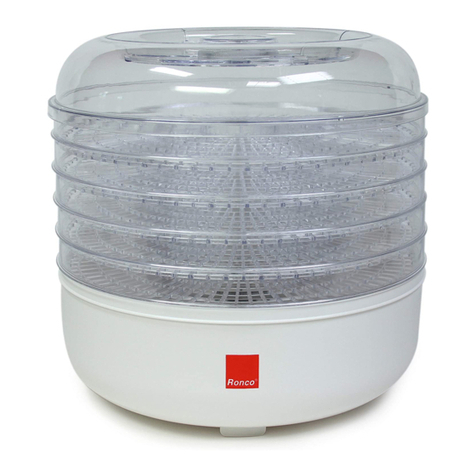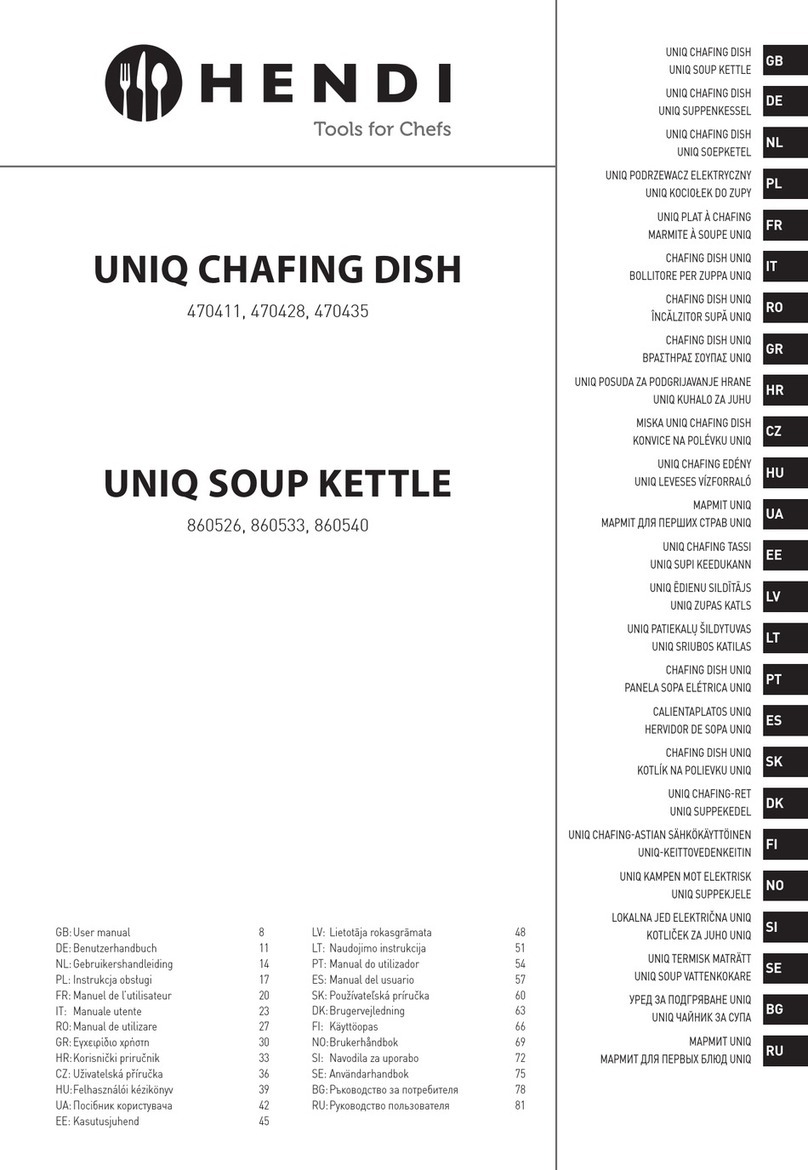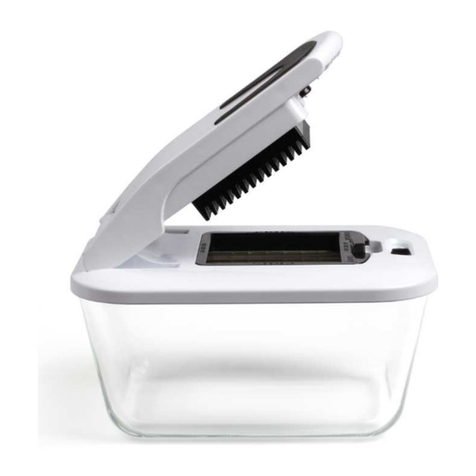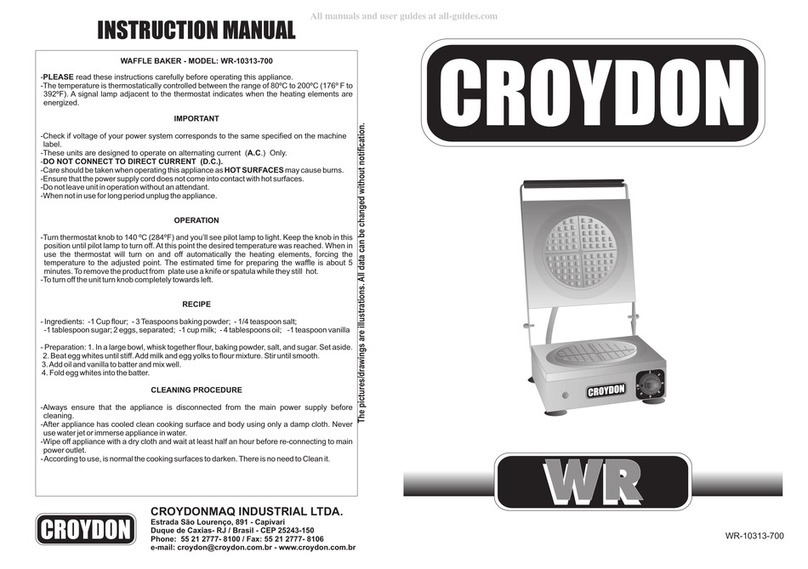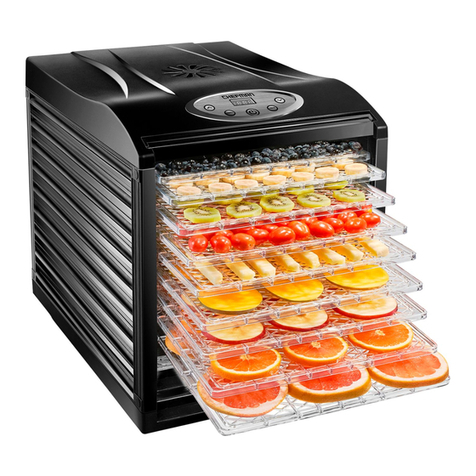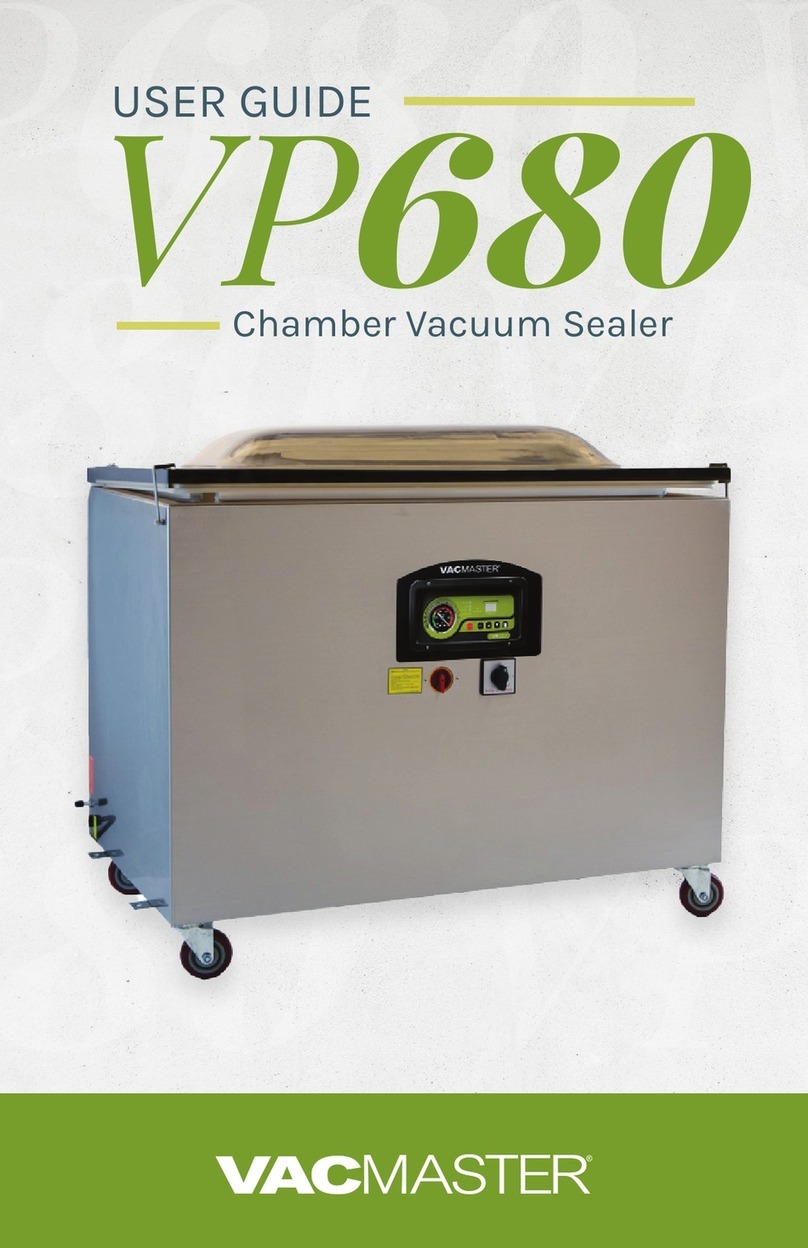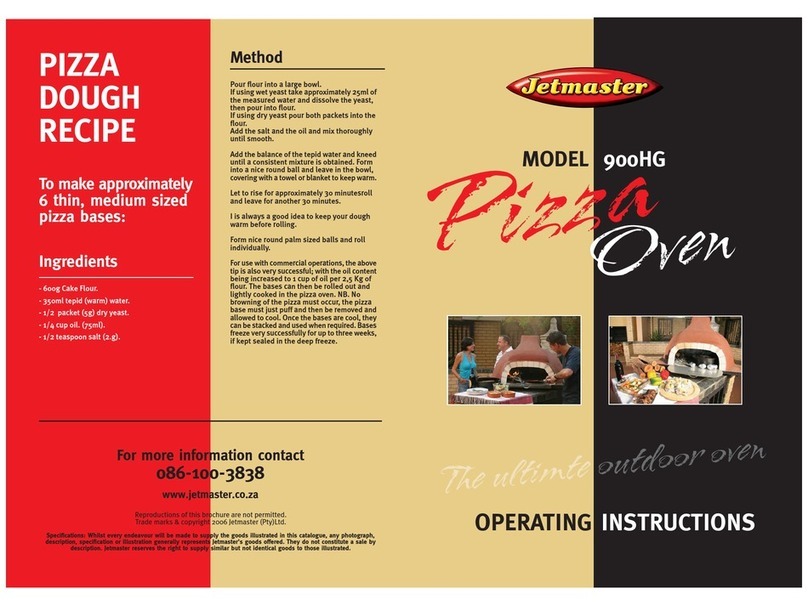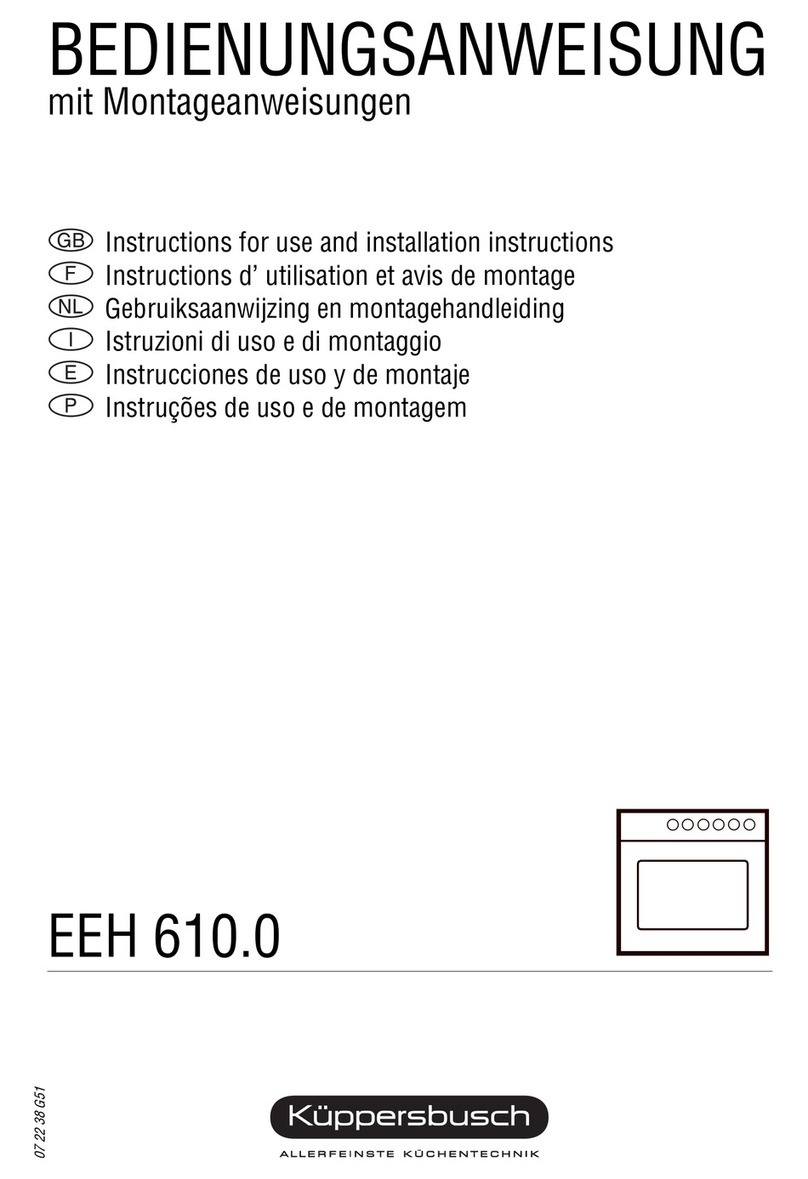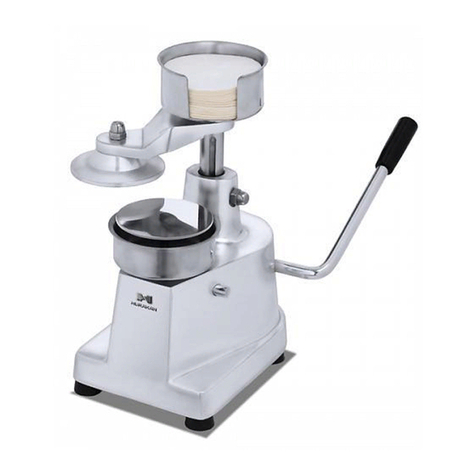
9
completely lit and then release the knob. Make sure that the burner remains on, otherwise repeat the operation. As for cookers
without ignition trough knob, press the thermostat knob and the key with the spark symbol, wait about 10 seconds after the
burner has been completely lit and then release the knob. Make sure that the burner remains on, otherwise repeat the
operation.
WARNING: As with the oven, the grill must be lit with the door completely open.
The gas grill can be used to grill foods on the oven shelf or using the rotisserie.
Grilling on the shelf: In this case, the shelf supplied is placed on level 1 or 2 and the foods to be grilled are placed on top,
while the tray is inserted on the lower levels to collect the cooking juices.
Then light the grill burner according to the instructions described above.
IMPORTANT: grill foods on the shelf always with the door close.
WARNING: the accessible parts may become very hot while grilling. Keep children away from the appliance while
cooking.
Grilling with the rotisserie: This is used to grill with the rotating skewer. Therefore, insert the skewer holder on the side
shelves at level 3. Insert the food on the skewer and insert everything into the oven, inserting the point of the skewer into the
spindle that projects out from the rear of the oven and resting the front of the skewer into the skewer holder support (fig.28).
Afther, insert the tray into one of the lower guides, then light the grill burner according to the instructions described above and
press the button that starts the rotisserie
IMPORTANT: grill foods with the rotisserie always with the door close.
WARNING: the accessible parts may become very hot while grilling. Keep children away from the appliance while
cooking.
USING THE GAS GRILL FOR MODEL WITH DOUBLE CONTROLS
The gas grill can be combined only with the gas oven.
A diagram is etched on the control panel above each knob which indicates which burner corresponds to that knob. The gas grill
can be ignited in different ways depending on the type of appliance and its specific characteristics:
- Manual lighting (it is always possible even when the power is cut off): Just completely open the oven door, turn the knob
counterclockwise that corresponds to the gas grill, setting it to the MAXIMUM position at the etched star (large flame Fig.17A-
17B-17C) while keeping the knob pressed and place a lit match up to the burner. Make sure that the burner is completely lit and
after about 10 seconds release the knob. Make sure that the burner remains on, otherwise repeat the operation.
- Electric ignition: In this case, completely open the oven door, press and turn the knob so that the relative symbol matches the
indicator, then press the thermostat knob (models with ignition trough knob). Wait about 10 seconds after the burner has been
completely lit and then release the knob. Make sure that the burner remains on, otherwise repeat the operation. As for cookers
without ignition trough knob, press the thermostat knob and the key with the spark symbol, wait about 10 seconds after the
burner has been completely lit and then release the knob. Make sure that the burner remains on, otherwise repeat the
operation.
WARNING: afther lighting the o ven and grill burners, please wait for 2 or 3 mi nutes before closing the oven door, in
order to allow the burners flamesto became stable
WARNING: As with the oven, the grill must be lit with the door completely open.
The gas grill can be used to grill foods on the oven shelf or using the rotisserie.
Grilling on the shelf: In this case, the shelf supplied is placed on level 1 or 2 and the foods to be grilled are placed on top,
while the tray is inserted on the lower levels to collect the cooking juices.
Then light the grill burner according to the instructions described above.
IMPORTANT: grill foods on the shelf always with the door close.
Grilling with the rotisserie: This is used to grill with the rotating skewer. Therefore, insert the skewer holder on the side
shelves at level 3. Insert the food on the skewer and insert everything into the oven, inserting the point of the skewer into the
spindle that projects out from the rear of the oven and resting the front of the skewer into the skewer holder support (fig.28).
Afther, insert the tray into one of the lower guides, then light the grill burner according to the instructions described above and
press the button that starts the rotisserie
IMPORTANT: grill foods with the rotisserie always with the door close
WARNING: the accessible parts may become very hot while grilling. Keep children away from the appliance while
cooking.
USING THE CONVENTIONAL ELECTRIC GRILL
The electric grill can be linked to the gas oven or to the electric oven.
Both cases, the grill is operated by the thermostat knob of the oven (see also the working of gas or electric oven). The gas grill
as well as the electric one can be used to grill on the oven grill or with the rotisserie.
The power of the electric grill is 2500W.
Grilling on the shelf: In this case, the shelf supplied is placed on level 1 or 2 and the foods to be grilled are placed on top,
while the tray is inserted on the lower levels to collect the cooking juices. Then turn on the grill element switching the thermostat
to the relative position (electric oven version).
IMPORTANT: grill foods on the shelf always with the door open (fig. 29) and, to avoid overheating, mount the handle
guard on the relative latches (fig. 31).
Grilling with the rotisserie: This is used to grill with the rotating skewer. Therefore, insert the skewer holder on the side
shelves at level 3. Insert the food on the skewer and insert everything into the oven, inserting the point of the skewer into the
spindle that projects out from the rear of the oven and resting the front of the skewer into the skewer holder support. Then,
insert the tray into one of the lower guides and switch the thermostat to the relative position and press the button with the
rotisserie symbol (electric oven version).
IMPORTANT: grill foods with the rotisserie always with the door semi-open (fig. 30) and, to avoid overheating, mount
the handle guard on the relative latches (fig. 31).
WARNING: the accessible parts may become very hot while grilling. Keep children away from the appliance while
cooking.




